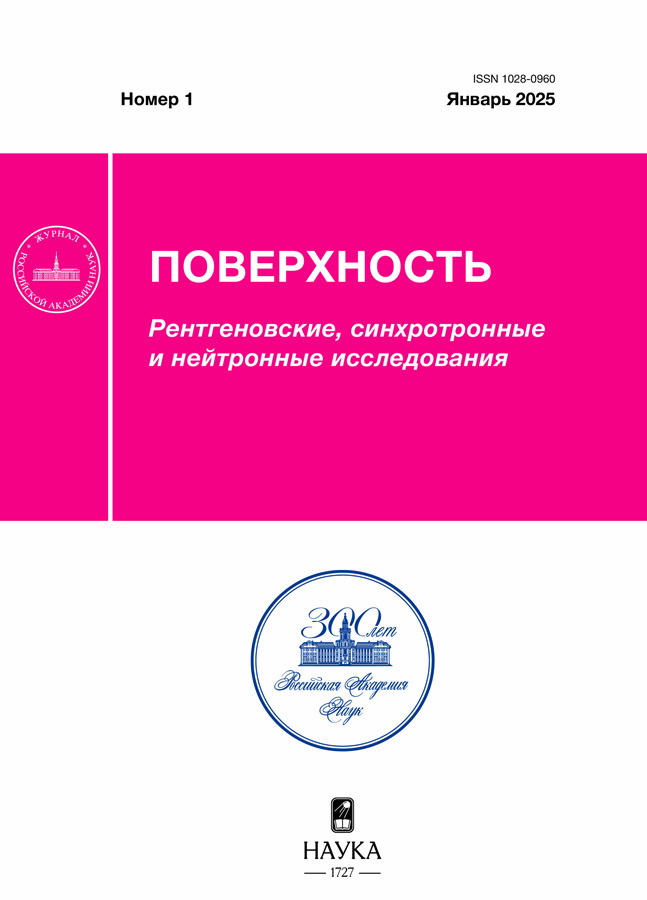Multi-Electron Excitations in Photoemission Spectra of Chalcogenide Semiconductors
- 作者: Grebennikov V.I.1, Kuznetsova T.V.1,2, Chumakov R.G.3
-
隶属关系:
- M.N. Mikheev Institute of Metal Physics, Ural Branch of the Russian Academy of Sciences
- Ural Federal University named after the First President of Russia B.N. Yeltsin
- National Research Centre “Kurchatov Institute”
- 期: 编号 1 (2025)
- 页面: 101-108
- 栏目: Articles
- URL: https://rjsocmed.com/1028-0960/article/view/686109
- DOI: https://doi.org/10.31857/S1028096025010142
- EDN: https://elibrary.ru/AAHMQA
- ID: 686109
如何引用文章
详细
Two types of multielectron effects of X-ray photoemission in chalcogenide semiconductors Cu2SnS3, Cu(In, Ga)Se2, CuGaTe2 have been experimentally studied. The first is interatomic Auger transitions with electron ejection from the inner levels of atoms surrounding copper (Sn, In, Ga), which arise as a result of the decay of the photohole formed on copper atoms during absorption of synchrotron radiation. And the second is the characteristic loss of kinetic energy during direct photoemission from the core–electron levels of tin atoms due to the dynamic Coulomb field of the photohole, the inclusion of which leads to shaking of Sn4d electrons into unoccupied states. The cause of both effects is the extremely non-equilibrium nature of the atom photoionization, which generates an almost instantaneous inclusion of the Coulomb field of the photohole in one of the inner levels of the atom. The surrounding electrons are subjected to a kind of impact and can increase their energy by tens of electron volts. The experiments show that the electrons of the 4d levels are “shaken up” most effectively. Firstly, there are many of them (ten per atom) and, secondly, due to the large centrifugal barrier, these electrons are on the periphery of the atom, as are the unoccupied free states, into which they pass when the photohole field is turned on.
全文:
作者简介
V. Grebennikov
M.N. Mikheev Institute of Metal Physics, Ural Branch of the Russian Academy of Sciences
编辑信件的主要联系方式.
Email: vgrebennikov@list.ru
俄罗斯联邦, Ekaterinburg, 620137
T. Kuznetsova
M.N. Mikheev Institute of Metal Physics, Ural Branch of the Russian Academy of Sciences; Ural Federal University named after the First President of Russia B.N. Yeltsin
Email: vgrebennikov@list.ru
俄罗斯联邦, Ekaterinburg, 620137; Ekaterinburg, 620002
R. Chumakov
National Research Centre “Kurchatov Institute”
Email: vgrebennikov@list.ru
俄罗斯联邦, Moscow, 123182
参考
- Grebennikov V.I., Kuznetsova T.V. // Phys. Stat. Sol. A. 2019. V. 216. P. 1800723. https://doi.org/10.1002/pssa.201800723
- Citrin P.H. // J. Electron Spectr. Rel. Phenom. 1974. V. 5. P. 273.
- Rao C.N.R., Sarma D. // Phys. Rev. B. 1982. V. 25 № 4. P. 2927. https://doi.org/10.1103/PhysRevB.25.2927
- Matthew J.A.D., Komninos Y. // Surf. Sci. 1975. V. 53. P. 716. https://doi.org/10.1016/0039-6028(75)90166-1
- Nishigaki S. // Surf. Sci. V. 1983. № 125. P. 762. https://doi.org/10.1016/S0039-6028(83)80058-2
- Yin L.I., Tsang T., Coyle G.J., Yin W., Adler I. // Phys. Rev. B. 1982. V. 26. P. 1093. https://doi.org/10.1103/PhysRevB.26.1093
- Danger J., Magnan H., Chandesris D., Le Fèvre P., Bourgeois S., Jupille J., Verdini A., Gotter R., Morgante A. // Phys. Rev. B. 2001. V. 64. P. 045110. https://doi.org/10.1103/PhysRevB.64.045110
- Wertheim G.K., Rowe J.E., Buchanan D.N.E., Citrin P.H. // Phys. Rev. B. 1995. V. 51. P. 13669. https://doi.org/10.1103/PhysRevB.51.13669
- Mahan G.D. // Solid State Phys. 1974. V. 29. P. 75.
- Grebennikov V.I., Babanov Yu.A., Sokolov O.B. // Phys. Stat. Sol. B. 1977. V. 79. P. 423.
- Grebennikov V.I., Babanov Yu.A., Sokolov O.B. // Phys. Stat. Sol. B. 1977. V. 80. P. 73.
- Grebennikov V.I., Sokolov O.B., Turov E.A. // Phys. Stat. Sol. B. 1978. V. 85. P. 127.
- Almbladh C.-O., Hedin L. Beyond the One-Electron Model // Handbook on Synchrotron Radiation. V. 1. Ch. 8. / Ed. Koch E.E. Hamburger Synchrotronstrahlungslabor, DESY, Germany, 1983.
- Pines D. Elementary Excitations in Solids. CRC Press, 2018.
- Кузнецова Т.В., Гребенников В.И., Якушев М.В. // Физика металлов и металловедение. 2018. Т. 119. № 6. С. 550. https://doi.org/10.7868/S0015323018060025
- Radzivonchik D.I., Lukoyanov A.V., Grebennikov V.I., Yakushev M.V., Kuznetsova T.V.// J. Alloys Compd. 2019. V. 802. P. 19. https://doi.org/10.1016/j.jallcom.2019.06.062
- Mansfield M.W.D., Connerade J.P. // Proc. Roy. Soc. London A. 1976. V. 352. P. 125.
- Wolff H.-W., Bruhn R., Radler K., Sonntag B. // Phys.Lett. А. 1976. V. 59. P. 67.
- Radtke E.-R. // J. Phys. B. 1979. V. 12. P. L71.
- Connerade J.P., Pantelouris M. // J. Phys. B. 1984. V. 17. P. L173.
- Giant Resonances in Atoms, Molecules and Solids / Ed. Connerade J.P. et al. New York: Plenum, 1987.
- Dzionk Ch., Fiedler W., Lucke M.V., Zimmermann P. // Phys. Rev. Lett. 1989. V. 62. P. 878.
补充文件
















